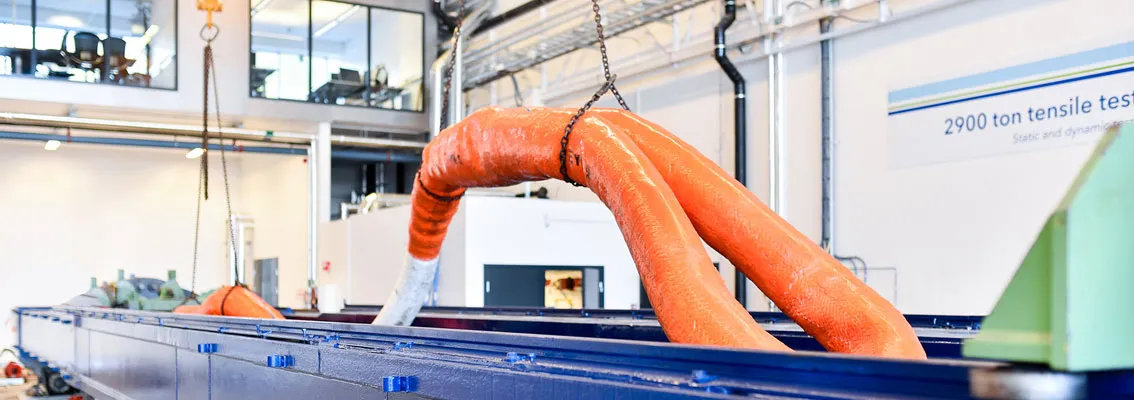Tests at DNV’s Bergen laboratories contributed to Shell’s effort to reduce the cost for deepwater developments.
Published: 17 October 2016
When Shell International Exploration and Production (Shell) wanted to judiciously select and design mooring components for its deepwater projects, it chose DNV’s Bergen laboratory to conduct testing for a technical pre-qualification programme for polyester ropes made by several manufacturers.
Deepwater is an important segment of the oil and gas industry, holding vast potential. Since such projects can be capital-intensive, operators are seeking ways to reduce costs while maintaining health, safety and environmental performance. The pre-qualification programme contributed to Shell’s effort to reduce total project costs. For example, the savings achieved on one project are estimated to be USD 1-2 million (m) in steel chain costs, and USD 1m in mooring system installation time. '
In its work for Shell, DNV’s experts in Bergen tested the tension-elongation characteristics of the polyester ropes, as well as their permanent non-recoverable elongation. “The results were used in the early stages of the mooring system’s design and analysis to verify that it could fit within tight constraints specific to Shell’s deepwater projects and meet the performance criteria required for installation and in-service conditions,” explained Hans-Jørgen Haugland, senior engineer, DNV.
Apart from its facilities, DNV’s Bergen laboratory has other attractions for companies assessing the merits of technologies. “Being an independent company makes us a neutral voice,” noted Hans-Erik Berge, business development leader, DNV. “You also need the right equipment and capacity to be able to programme repeatable tests so that you apply the same ones consistently. In this case, the pre-qualification process was also quite fast and was time critical for Shell, for example. We were able to deliver.”
DNV’s recently-enhanced Technology Centre for Offshore Mooring and Lifting in Bergen features one of the world’s largest tensile testing machines features among enhanced capabilities. The machine offers a 2,900 ton (28500 kilonewton) load capacity, and a 20 metre long test bed.
Kurt Eide, principal engineer, DNV, added: “We have the right equipment, some of it unique, but also the right competence. We have been working with fibre ropes for customers worldwide since the mid-1990s and know how to interpret the results and discuss them with end users.”
The team at DNV’s Bergen facility has a long-established reputation for testing deepwater moorings. Its expertise is enhanced through close cooperation with the company’s global network of 18 laboratories and test sites situated over three continents, in addition to expertise from teams in offices located in other key energy hubs, such as Oslo, Houston and Singapore.
Eide suggested, “For operators conducting their own front-end engineering design (FEED), testing with vendors could mean opportunities to optimize the mooring system. Even if operators are not doing the FEED, they could still invite several manufacturers to go through third-party testing to enable optimization.”
